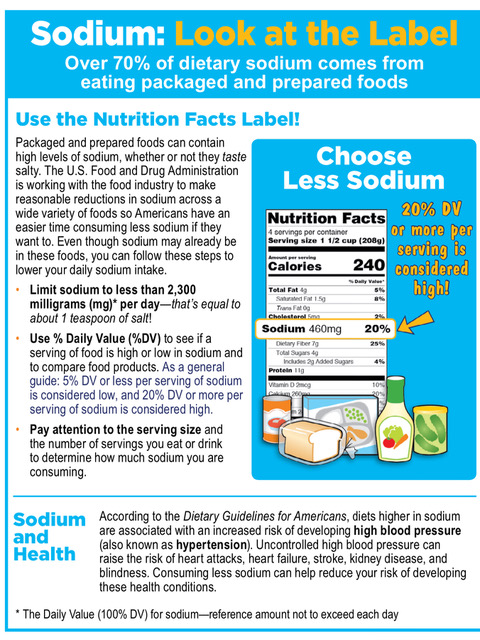Shake the Salt Out
12.28.2020
Help your customers and patients be successful by choosing from our full line of Ada Valley Low and Reduced Sodium Meats. Lowering the sodium content of your meals is easy to do once you know the goal, why it’s important to your health, and where the majority of sodium comes from in your diet.
The Goal
The American Heart Association recommends no more than 2,300 milligrams (mg) of sodium per day for most adults, especially those with high blood pressure. The average adult consumes 3,400 mg, or just shy of 150% of the daily recommended intake, according to the Centers for Disease Control and Prevention.
Sodium and Your Health
Eating too much sodium increases one’s risk for serious medical conditions like high blood pressure, heart disease, and stroke. High blood pressure occurs in 30% of young adults and rises to 80% of older adults in the United States. While you can’t control the normal aging process or genetics, making healthy lifestyle choices can reduce your risk or improve your blood pressure control. Healthy lifestyle choices include maintaining a healthy weight, not smoking, getting regular exercise, limiting alcohol, having healthy outlets for stress, and increasing your intake of potassium rich fruits and vegetables as well as calcium rich foods like low-fat dairy products, spinach, and salmon.
High blood pressure can impair your vision, cause kidney damage, and contribute to dementia. Many of the symptoms are so slight at first that they cause considerable damage before they are noticed. Poorly controlled high blood pressure can also lead to strokes and heart attacks.
Sodium Food Sources
Knowing where salt comes from is the first step to keeping your intake at a reasonable level. Most people are surprised to learn that ready-made or convenience foods contribute the majority of sodium in their diet. Adding salt at the table or in cooking adds negligible amounts by comparison.
Where Salt Comes From:
- Processed food 77%
- Fresh foods 12%
- Salt at the Table 6%
- Salt in Cooking 5%
High sodium processed foods include baked goods (bread, biscuits, bagels), salad dressings, pickled foods, canned soups, processed meat and cheese, and snack foods (chips, salted nuts, pretzels, crackers).
Sodium Food Sources
When we consume too much sodium, water follows sodium into the cells increasing pressure on artery walls. In simplified terms, when we consume potassium rich foods it helps pump some of the sodium back out so the pressure is not as great. Potassium rich foods include regular and sweet potatoes, tomatoes, strawberries, peaches, melons, bananas, oranges, grapes, dried fruits and tomatoes, prunes, carrot juice, and coconut water. Including potassium rich foods and beverages at mealtimes is as easy as enjoying a glass of orange juice at breakfast, a banana at lunch, and a baked potato with dinner. Never take potassium supplements unless prescribed by your doctor.
Source: FDA.gov

Nutrition Tip: Reduce your reliance on salt by increasing your use of herbs and spices. If you like the salty flavor, add a light sprinkle of salt at the table so it’s the first flavor that hits your taste buds: in doing this you’re apt to use less. One teaspoon of salt contains 2300 mg sodium. Here are some nutrition label claims and what they actually mean.
| Label Reads | What it Means |
|---|---|
| Salt/Sodium Free | Less than 5 mg of sodium per serving |
| Very Low Sodium | 35 mg of sodium or less per serving |
| Low Sodium | 140 mg of sodium or less per serving |
| Reduced Sodium | At least 25% less sodium than the regular product |
| Light in Sodium or Lightly Salted | At least 50% less sodium than the regular product |
| No Salt Added or Unsalted | No salt was added during processing (these items may not be salt or sodium free so read the nutrition label) |
The American Heart Association suggests people beware of the “Salty Six”:
- Breads, rolls, bagels, flour tortillas, and wraps
- Cold cuts and cured meats
- Pizza
- Poultry that has been injected with sodium, for example “Fresh chicken in a 15% solution”
- Soup
- Sandwiches
More Resources:
- Information, sample menus, and recipes: Dietary Approaches to Stop Hypertension (DASH Diet).
- How to reduce your sodium intake: Get the Facts: Sodium and the Dietary Guidelines.
- Low sodium recipes: American Heart Association, recipes section.
